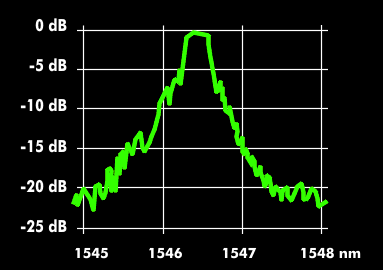fiber bragg grating (FBG)
A Bragg grating is an optical grating that works as an optical filter. The Bragg grating is created by changing the structure of the core material of glass fibers. In this process, an ultraviolet high- power laser is used to introduce grating structures as zones with different refractive indices into the core glass. These act as diffraction gratings.
Depending on the distance between the grating lines, certain wavelengths are reflected - these are the Bragg wavelengths - while all other wavelengths are only slightly affected by the Bragg effect.
The Bragg wavelength is thus a function of the spacing between the grating lines. Changing the grating line spacing changes the reflection index. This allows a wider bandwidth range to be covered around the selected wavelength. The decoupling of the individual wavelengths is done by additional decoupling elements. A Bragg grating can also be constructed using planar waveguide layers of silicon dioxide( SiO2) or germanium oxide.
Such passive optical filters are characterized by high wavelength selectivity and are used, among other things, in optical add/drop multiplexers( OADM) and in acoustic optical modulators( AOM) for intensity modulation in laser projectors.

